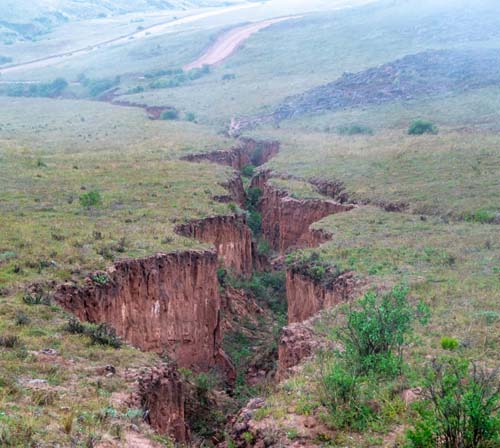One of the most frightening disasters is earthquakes. They remind us of the forces of nature. We have no power to prevent an earthquake from occurring, but there are things we need to learn from what happened.
The unknown is feared. We should be afraid because we do not know the time of earthquakes. However, if we can predict how much damage an earthquake will cause when it occurs and if we know that adequate precautions have been taken for this, our fear can be reduced a little.
Knowing the dangers that come with earthquakes makes us stronger. Preparing properly for a disaster, making rational task distribution, and creating living and resilient organizational charts reduce the unknown; It strengthens us.
Nature is always ahead of us. There is no choice but to be compatible with it. We know deep down that resisting it will not bring any benefit and that we have no choice but to comply with it. On the one hand, nature is instructive. We learn from nature how to prepare for disasters.
Earthquakes change our environment. Other consequences caused by the physical changes experienced after the initial shock begin to emerge rapidly. These effects can be long-lasting and even fatal for the people living there. The biggest problems occur when earthquakes occur in densely populated areas. It becomes increasingly difficult to survive in such areas. Understanding change, taking precautions, and then being able to adapt saves lives.
*
We can classify the environmental effects of earthquakes as direct and indirect effects. Direct effects are immediately visible on structures, buildings and land. Ground faults, landslides, changes in water levels, etc. The extent of destruction is largely determined by the characteristics of the area where the earthquake occurs. For example, coastal areas may face the danger of tsunamis and subsequent major floods. There may be major changes in land morphology after earthquakes. For example, lakes may disappear and new lakes may form.
Indirect effects are effects that are generally unpredictable but can cause long-term problems on the environment. Fires caused by destroyed factories, contamination of drinking water, environmental pollution due to damaged water lines, and ruptured gas, electricity and fuel lines are in this class. Heavy metals released into the environment can continue to pollute agricultural areas for years.
Waste management is an issue that needs to be addressed on its own. Thousands of buildings have now been reduced to rubble and the amount of waste exceeds the capacity of waste management systems. The most appropriate solution would be to recycle these wastes and recycle them in construction projects. However, high amounts make the job of waste management units very difficult.
Spills such as heavy metals, wastewater, sewage, medical and radioactive substances will cause pollution of air, water and soil environments. Soil erosion problems will arise in deforested areas.
Earthquakes trigger landslides and the formation of many ground cracks. It destroys settlements, infrastructure, agricultural areas, forests and water resources. The number of landslides that occur from time to time after earthquakes also increases. Water resources may change and the flow regime of rivers may be disrupted. Some of them may not start flowing at all. Some waterways may be blocked by landslides. Some new waterways may form. Freshwater ecosystems are affected by increased amounts of sediment.
Forest cover loss occurs due to earthquakes. It will take years for these areas to regain balance and vegetation to establish. Invasive species are likely to emerge and new ecosystems to form. Protected areas need to be protected more in times like these. It should not be forgotten that some animals, like humans, lost their lives in the earthquake, and some lost their habitats.
Large amounts of excavation waste are generated from destroyed buildings. Hazardous waste and medical waste reach environmental environments. Electrical waste, chemicals from laboratories, petroleum products, heavy metals such as lead and mercury. These emissions present long-term effects. Some toxic components reach groundwater or rivers. Waste produced in emergency camps must be managed separately.
Various diseases may occur due to inadequate hygiene conditions after the earthquake. Damage to waterways, deterioration of air quality, endangerment of food safety, waste and sanitation problems, infectious diseases and vector control, radiation, injuries, emergency preparations and toxicology issues are addressed separately and an emergency and risk plan is made for each. is necessary.
*
The effects of earthquakes are felt both instantly and over time. It should not be forgotten that problems occurring in the physical environment leave traces on the natural environment, both repairable and irreparable. I hope to see the days when our country is adequately prepared for earthquakes, which are not considered a major problem for the developed world, where casualties are limited, and the consequences are not devastating.
The effects of earthquakes are felt both instantly and over time. It should not be forgotten that problems occurring in the physical environment leave traces on the natural environment, both repairable and irreparable. I hope to see the days when our country is adequately prepared for earthquakes, which are not considered a major problem for the developed world, where casualties are limited, and the consequences are not devastating.

